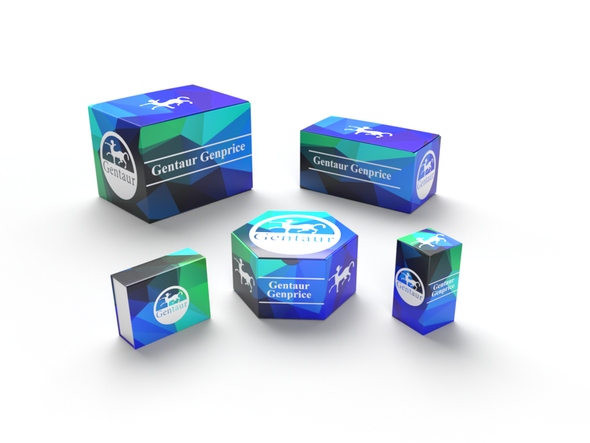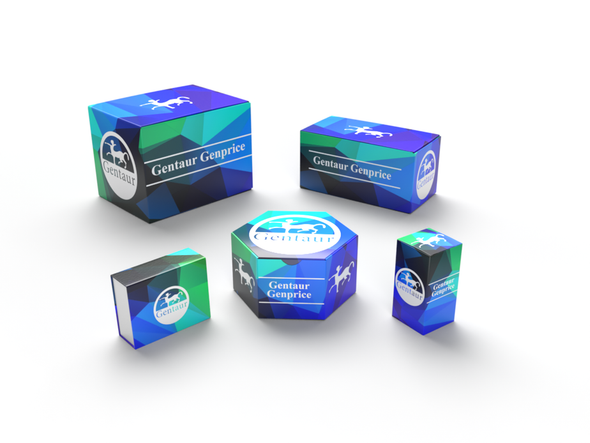LBD
KLRC1 Antibody (N-term) [APR03712G]
- SKU:
- LBD-APR03712G
- Availability:
- Usually ships in 5 working days
Description
KLRC1 Antibody (N-term) [APR03712G] | Gentaur UK, US & Europe Distribution
Product Category: Polyclonal Antibodies
Host: Rabbit
Species Reactivity: H
Specificity: This KLRC1 antibody is generated from rabbits immunized with a KLH conjugated synthetic peptide between 1-30 amino acids from the N-terminal region of human KLRC1.
Cellular Localisation: Cell membrane; Single-pass type II membrane protein
Molecular Weight: 26314
Clone: Polyclonal
Gene Name: KLRC1
Gene ID: 3821
Function: Immune inhibitory receptor involved in self-nonself discrimination. In complex with KLRD1 on cytotoxic and regulatory lymphocyte subsets, recognizes non-classical major histocompatibility (MHC) class Ib molecule HLA-E loaded with self-peptides derived from the signal sequence of classical MHC class Ia molecules. Enables cytotoxic cells to monitor the expression of MHC class I molecules in healthy cells and to tolerate self (PubMed:9486650, PubMed:18083576, PubMed:9430220) . Upon HLA-E-peptide binding, transmits intracellular signals through two immunoreceptor tyrosine-based inhibition motifs (ITIMs) by recruiting INPP5D/SHP-1 and INPPL1/SHP-2 tyrosine phosphatases to ITIMs, and ultimately opposing signals transmitted by activating receptors through dephosphorylation of proximal signaling molecules (PubMed:9485206, PubMed:12165520) . Key inhibitory receptor on natural killer (NK) cells that regulates their activation and effector functions (PubMed:9486650, PubMed:9430220, PubMed:9485206, PubMed:30860984) . Dominantly counteracts T cell receptor signaling on a subset of memory/effector CD8-positive T cells as part of an antigen- driven response to avoid autoimmunity (PubMed:12387742) . On intraepithelial CD8-positive gamma-delta regulatory T cells triggers TGFB1 secretion, which in turn limits the cytotoxic programming of intraepithelial CD8-positive alpha-beta T cells, distinguishing harmless from pathogenic antigens (PubMed:18064301) . In HLA-E-rich tumor microenvironment, acts as an immune inhibitory checkpoint and may contribute to progressive loss of effector functions of NK cells and tumor-specific T cells, a state known as cell exhaustion (PubMed:30503213, PubMed:30860984) .
Summary: Tissue Location: Predominantly expressed in NK cells (at protein level) (PubMed:9430220, PubMed:9485206, PubMed:20952657) . Expressed in intraepithelial CD8-positive T cell subsets with higher frequency in gamma-delta T cells than alpha-beta T cells (at protein level) (PubMed:18064301) . Expressed in memory gamma-delta T cells (at protein level) (PubMed:20952657) . Restricted to a subset of memory/effector CD8-positive alpha-beta T cells (at protein level) (PubMed:12387742) Expressed in intratumoral NK and CD8-positive T cells (PubMed:30503213) . Expressed in melanoma-specific cytotoxic T cell clones (at protein level) (PubMed:9485206) . KLRD1-KLRC1 and KLRD1-KLRC2 are differentially expressed in NK and T cell populations, with only minor subsets expressing both receptor complexes (at protein level) (PubMed:20952657) .
Form: Purified polyclonal antibody supplied in PBS with 0.09% (W/V) sodium azide. This antibody is purified through a protein A column, followed by peptide affinity purification.
Storage: Maintain refrigerated at 2-8°C for up to 2 weeks. For long term storage store at -20°C in small aliquots to prevent freeze-thaw cycles.
Application: WB, IF
Dilution: WB--1:1000 IF--1:10~50
Synonyms: NKG2-A/NKG2-B type II integral membrane protein, CD159 antigen-like family member A, NK cell receptor A, NKG2-A/B-activating NK receptor, CD159a, KLRC1, NKG2A

![KLRC1 Antibody (N-term) [APR03712G] KLRC1 Antibody (N-term) [APR03712G]](https://cdn11.bigcommerce.com/s-1rdwiq712m/images/stencil/608x608/products/55378/55682/gentaur-genprice__26005.1661610467__29809.1661628092__75433.1661676199__77988.1661684280__64362.1661692443__37010.1661836196.png?c=1)

![KLRC1 Antibody (C-term) [APR06107G] KLRC1 Antibody (C-term) [APR06107G]](https://cdn11.bigcommerce.com/s-1rdwiq712m/images/stencil/590x590/products/59545/59849/gentaur-genprice__26005.1661610467__29809.1661628092__75433.1661676199__77988.1661684280__64362.1661692443__80778.1661856358.png?c=1)


